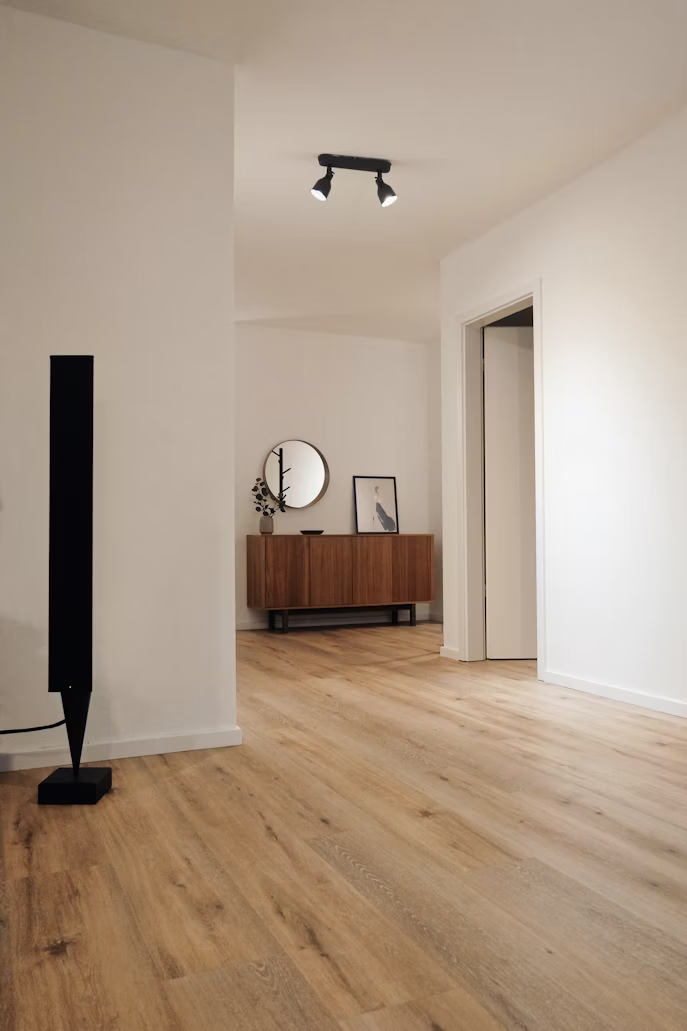Renovating a space often begins with inspiration, then quickly shifts into managing costs, balancing timelines, and making a long list of decisions. From the color of the walls to the placement of furniture, every choice takes time and often leads to second-guessing. Technology has started to streamline this process in unexpected ways. Artificial Intelligence (AI), once reserved for high-tech industries, is finding a meaningful role in home improvement. Whether you’re updating a kitchen, refreshing a living room, or preparing a property for sale, AI offers tools that can make the process smoother, faster, and less expensive.
Visualize the Finished Space Before the First Nail is Hammered
One of the biggest hurdles in renovation is visualizing the final result before committing to irreversible changes. Traditional mood boards and sketches can only go so far. This is where virtual interiors by AI become invaluable. By uploading a photo of your current space, you can receive photorealistic images of how that same room might look with different finishes, furniture, or layouts. This is often referred to as virtual staging.
Virtual staging powered by AI doesn’t require moving a single piece of furniture. It can strip a room bare, redesign it with modern aesthetics, and present multiple styles, all in a matter of minutes. This is particularly helpful for homeowners trying to decide between design options or for sellers who want to present a space most appealingly. Real estate professionals are increasingly turning to AI-generated interiors to give empty homes personality, avoiding the high cost of physical staging. For homeowners, this approach brings clarity and confidence before making a single purchase.
Estimate Budgets More Accurately with AI-Powered Tools
Budgeting is one of the most stressful aspects of any renovation project. Costs can spiral quickly when unexpected issues arise or when material prices fluctuate. AI can help avoid some of these financial surprises by using predictive modeling to estimate costs based on similar projects, current market prices, and the square footage of your space.
By analyzing past renovation data, AI tools can offer a more grounded budget forecast. These tools often break down the costs by category, materials, labor, and permits, so homeowners can decide where to save and where to spend. They also help spot where quotes from contractors might be higher than typical, giving users more negotiating power. AI can also take into account regional pricing, making it easier to plan a renovation in line with local costs rather than relying on outdated national averages.
Find and Compare Contractors Faster
Selecting the right contractor can feel like a gamble. Reviews are scattered, pricing varies, and availability can change by the week. AI simplifies this part of the process by using review aggregation, background checks, project history, and pricing data to match users with contractors who fit their needs.
Some platforms now offer intelligent matching services that suggest contractors based on the size and scope of your project. Instead of cold-calling a list of names, you can receive a shortlist of candidates with proven track records on similar jobs. AI can also flag red flags in reviews or detect patterns that suggest a contractor might not deliver on time. This saves days of research and helps avoid missteps that can delay or derail a renovation.
Prevent Design Mistakes Before They Happen
Many homeowners discover too late that their new kitchen layout feels cramped, or that their lighting choice doesn’t work with the wall color. AI design assistants use machine learning to catch these problems in the planning stage.
By uploading floor plans or room measurements, you can test different configurations and receive instant feedback on spacing, lighting, and visual harmony. These tools evaluate flow, functionality, and proportion in ways that are difficult to do with a static blueprint or a 2D sketch. Some even simulate how natural light enters the room during different times of the day, helping you choose better window treatments, paint shades, or seating arrangements.
Make Eco-Friendly Choices with Less Guesswork

Renovating with sustainability in mind often requires digging into material sourcing, energy efficiency, and local regulations. AI simplifies this process by recommending eco-conscious options that align with your design goals and budget.
It might suggest reclaimed wood flooring that matches your style or identify insulation materials that offer better energy savings without breaking the bank. It can even estimate the long-term savings of installing smart thermostats, LED lighting, or solar-compatible fixtures.
By evaluating multiple factors at once, including initial cost, environmental impact, and durability, AI supports smarter decision-making. It doesn’t just suggest what’s good for the planet, but what makes sense for your specific project and goals. This leads to renovations that are not only stylish but sustainable, all without requiring hours of research.
Renovation doesn’t have to be a long series of stressful decisions and expensive surprises. By using AI as a planning partner, you’re not just saving time and money; you’re setting yourself up for a renovation that feels less like a gamble and more like a strategy.
